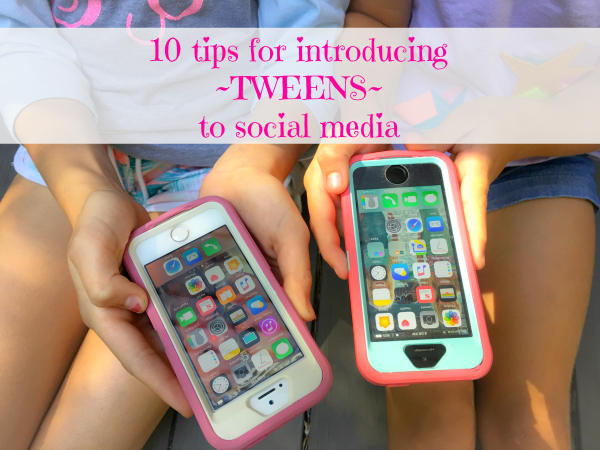I’m sure you have encountered at least one person who afterwards, left you thinking, “Wow, he was so rude!” or “She has no manners!” Social skills are complex and laden with subtle nuances that influence how we interact with others. They are our abilities to get along with others, knowing what skills to use in different situations in order to create positive relationships. They can include things such as the capability to wait, making compromises, reading body language, deciding what to say, and how to say it.
Technology makes up a big part of modern communication
In today’s digital world, we connect virtually to others through various platforms, which provides us less opportunity to practice and develop social skills one-on-one. This instant and constant communication means kids are having multiple conversations with others and are often involved in problematic social dynamics of their peers without being equipped to do so. They are being placed in stressful situations and are exposed to much more information than ever before. As a result, there appears to be a growing deficit in our children’s social skills.
Looking at social media and kids
Let’s face it, many of us spend a lot of time in front of some sort of screen, but how much screen-time are our children actually getting? The Kaiser Family Foundation completed a national survey and found that 8 to 18-year-olds spend, on average, around 7 hours a day on some form of technology. And it’s not just one screen! Many children use more than one device at the same time!
Why kids like social media interaction
How does all this multi-screen use impact our children socially? Children feel more secure behind a screen. This perceived invisibility provides them with a false sense of security where they can “stand-up” and “speak up”, but not necessarily in an appropriate manner or by seeking input from an adult first. Quieter and more reserved children feel confident to say what’s on their mind, thinking and perhaps believing that their conversations are private. The kids of today are also communicating with one another by using emojis and acronyms (LOL, TY, MOS), which means messaging isn’t always clear and accurate.
Social media changes how our kids read social cues
Children text, Snap, and use WhatsApp and other forms of mobile messaging. These platforms change how kids communicate with one another. Within this fast-paced, immediate-response tech world of increased screen-time children are responding when they should be waiting and thinking, are taking inappropriate pictures and sending them, or simply blocking another when they are upset. All of these behaviours (and more) are causing some serious negative consequences, like:
- decrease in interpersonal communication
- lack of motivation to be more physically active
- decline in the ability to wait or to be patient
- inability to problem-solve
- significant decrease in grades
- increase in social isolation
- increase in bullying behaviour
Parents can help their kids navigate social media
What can we as parents do to help our kids navigate the social tech world and make sure our children are developing essential social skills?
It always starts at home! What messages are you sending your children? Do you wake up first thing in the morning to check how many likes you’ve received on your latest Facebook post? Do you bring out your phone at the dinner table? As parents we need to take an active role in modeling the behaviour we would like to see in our children.
Go back to basics
Review and teach manners in your children. Communication is not just what you say, but also how you say it. Whenever one of my children speak to me a in a rude tone, I say “Hmmm, try that again.” This simple statement let’s them know that what they are saying is not appropriate and that they need to say it differently. When they were younger, I would use that statement and model what — and how — they should have said instead.
Create a digital free zone in your home
In my home, no technology is allowed during meal time, including TV. This also includes bedrooms! At night all electronics are turned off and charged in a “safe place” (e.g., kitchen, office). You may also want to consider setting time limits or key times that your children can use technology.
Many computers are equipped with the ability to automatically shut down at a set time and can’t be turned back on until a set time or with a password that only you know. These rules need to be established early on, so they become a routine which helps to get buy-in from your children, especially your teenagers.
Carve out time to connect as a family
Family conversations can be something to cherish. It allows you an opportunity to find out what’s going on in your children’s lives and coach them to solve any problems they maybe experiencing. Children often find themselves in a situation with their peers that they are not equipped to handle. They may be afraid or unable to seek your advice in that moment for fear of others knowing.
Create a safe word system with your kids
By creating a safe-word with your child, you allow them to escape the situation and call you. The safe word alerts you that something isn’t right, and your child is reaching out for help. You can then offer guidance during that instant. For example, if your child is experiencing a problem, they can tell their friends “Oh, I forgot to tell my mom that Uncle Fred called, she’s waiting for his call, so I just need to let her know.” This allows them an “escape” to text or call you. Just remember to use a safe word/statement that would never really occur (e.g., make sure there is no Uncle Fred in your family).
Directly teach your kids how to use technology
Teaching technology means setting and communicating boundaries. This means reviewing rules and etiquette. When you receive an email do you respond right away or wait several days? It’s okay to acknowledge an email or text and then let the person know that you will get back to them with a more detailed response or answer when you have more time.
It’s also important to teach about NOT responding when you are angry. I’m sure you know a few people who would benefit from this advice. A common response when angry is to block that person from your accounts. This act can be taken as very aggressive, so have a conversation about the difference between giving yourself time to cool-down versus never speaking to that person again.
Reinforce rules about photos
There is also a growing concern regarding images or pictures that our children take and send to others. It is critical to teach your kids that once a picture is sent to the virtual word, its almost impossible to delete. Asking them to think about their future is not always effective as many kids are caught up in the moment of now. A general rule of thumb should be, if you’re not willing to show that picture to your parents, then don’t send it!
Get active as a family
The health benefits are high, and it certainly is a chance to practice prosocial behaviours in various setting. Don’t forget about teachable moments. Use the mistakes your child makes as an opportunity for them to grow and learn. These moments help to open the dialogue about what went wrong and what they can do next time. It should be about teaching and not a time for lecturing.
Who is paying the bill? Yes, you have purchased many of these devices for your child but that doesn’t mean you as a parent don’t have the right to check their phone every so often. This should also include when a device was a gift!
When we focus on teaching our children how to use technology safely, we are providing them with the necessary tools that have long lasting benefits. Now, that you have finished reading this article, have a family meeting to discuss your new family rules around technology, then you can go and check all your notifications!
How do you help your kids develop social skills — on and off social media?
References:
- https://www.kff.org/other/event/generation-m2-media-in-the-lives-of/
- http://abcnews.go.com/WN/kids-electronics-study-shows-kids-spend-hours-day/story?id=9616699
- http://www.bbc.com/news/technology-32067158
- https://www.scripps.org/news_items/4688-do-your-kids-spend-too-much-time-in-front-of-a-screen
Read more from Janet Arnold in her book, How to Explain a Diagnosis to a Child





